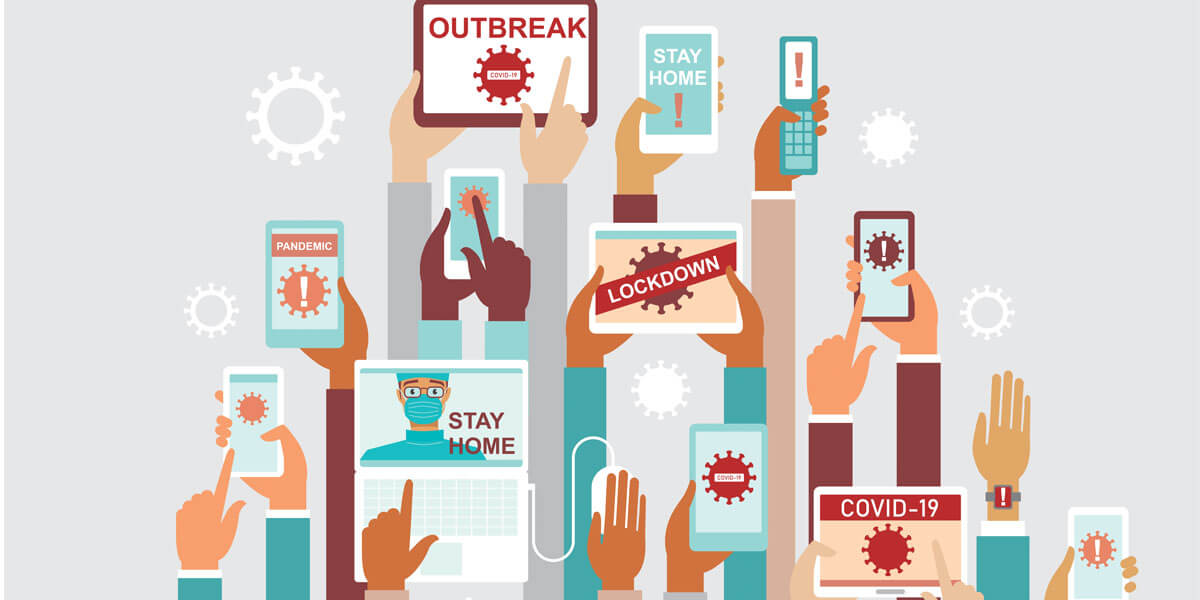
In an ongoing analysis of more than five million tweets, USC computer science researchers have identified surprising and misleading claims about the coronavirus pandemic. Image/iStock.
As concerns over the novel coronavirus have surged, so too has misinformation on social media—from false claims about hot water eliminating the virus to hoaxes about nationwide quarantines.
In fact, posts, texts and email chains spreading misinformation have become so prevalent that law enforcement and international agencies, including the New York Police Department and World Health Organization, have had to issue public responses to dispel rumors.
While countries are trying to contain the virus’ spread, with the U.S. now facing a surging number of cases, this wave of misinformation could drain critical resources and provide a potentially dangerous distraction.
At USC Viterbi’s Melady Lab, Yan Liu, a computer science associate professor, and her team have been tracking coronavirus rumors on social media. She said social networks play an important role in ensuring public health guidelines are properly communicated, and that the spread of false information could be serious.
“The amount of unreliable news is a huge potential threat to public health,” said Liu, a Philip and Cayley MacDonald Endowed Early Career Chair whose research focuses on machine learning and data mining with applications to biology, climate science, health and social media.
“The amount of unreliable news is a huge potential threat to public health.” Yan Liu.
Since March 1, Liu and her colleagues, including her Ph.D. student Karishma Sharma, have analyzed more than five million tweets from 182 countries to describe the messages people — and bots — have been sending during the coronavirus outbreak.
Liu and her team filtered messages according to topic clusters and trends, and scanned them for misinformation. The researchers also filtered messages for emotional content using sentiment analysis.
The work, a collaboration with the National Academies of Sciences, Engineering and Medicine’s New Voices in Science, Engineering and Medicine initiative, is currently ongoing. Sharma, whose research focuses on information propagation analysis, including early detection of fake news, answered our questions about their findings to date.
Karishma Sharma talks about the importance identifying misinformation on social media during the coronavirus pandemic.
We are interested in understanding the types of conversation and information shared on social media about the coronavirus pandemic. We analyze the topics people are discussing, the general sentiment towards different policies like social distancing, and the kinds of false and misleading information shared online. We want to understand and share our findings about the positive and negative impact social media can have during global crisis events.
“We want to understand and share our findings about the positive and negative impact social media can have during global crisis events.” Karishma Sharma.
You’ve been analyzing misinformation about the virus. What have you seen?
We detected around 4% of the source posts contain false, misleading or clickbait information. Misinformation can impact both the evolving health crisis, as well as upcoming elections. For example, one misleading post suggests that Bernie Sanders is using coronavirus fears for fundraising; another that Russia is waging an oil war against Saudi Arabia amid coronavirus concerns. There are also misleading claims suggesting that the flu mortality rate is higher than the virus, or that people can become immune by eating specific things.
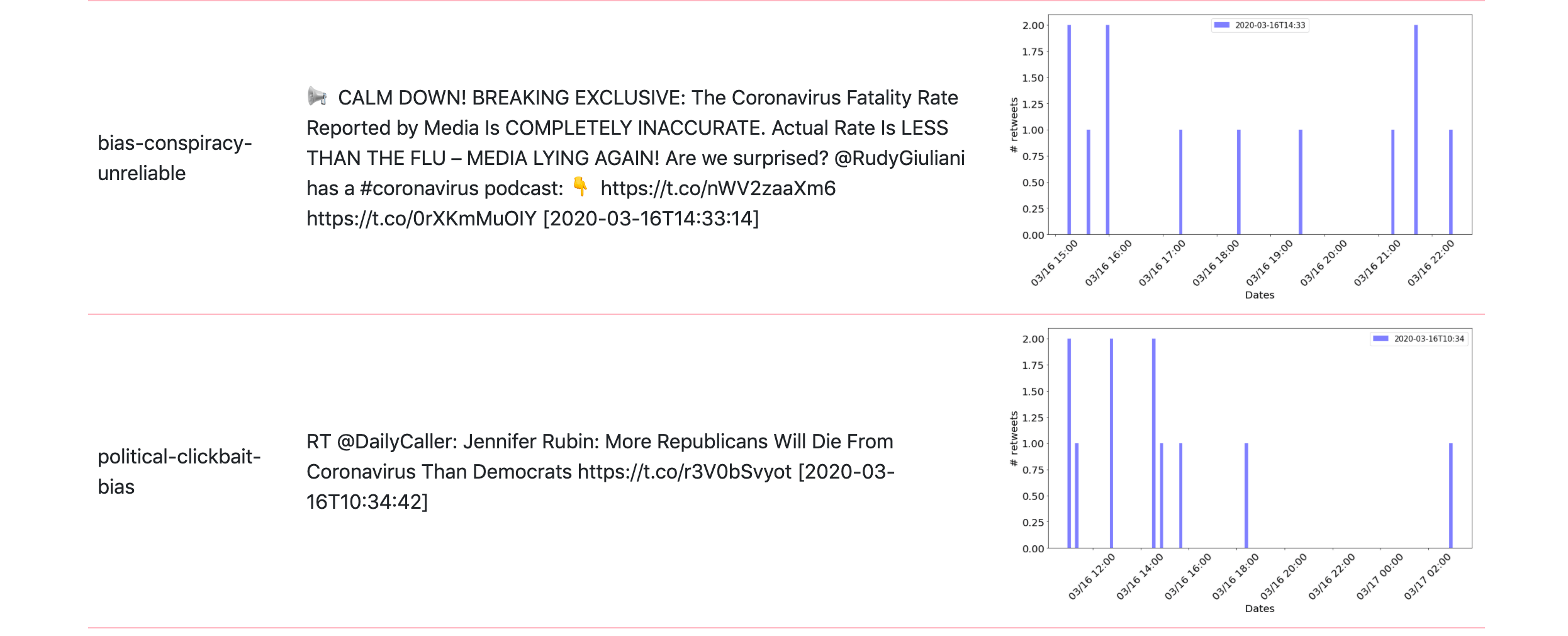
Examples of misleading tweets exposed by the analysis.
What sentiment are you seeing in different countries?
We found the overall sentiment on Twitter is positive for policies related to work from home (76%) and social distancing (70%). We also found that different countries had different sentiment distributions. The United States ranked higher among countries with more negative sentiment than positive sentiment, as compared to countries like China where the outbreak is subsiding.
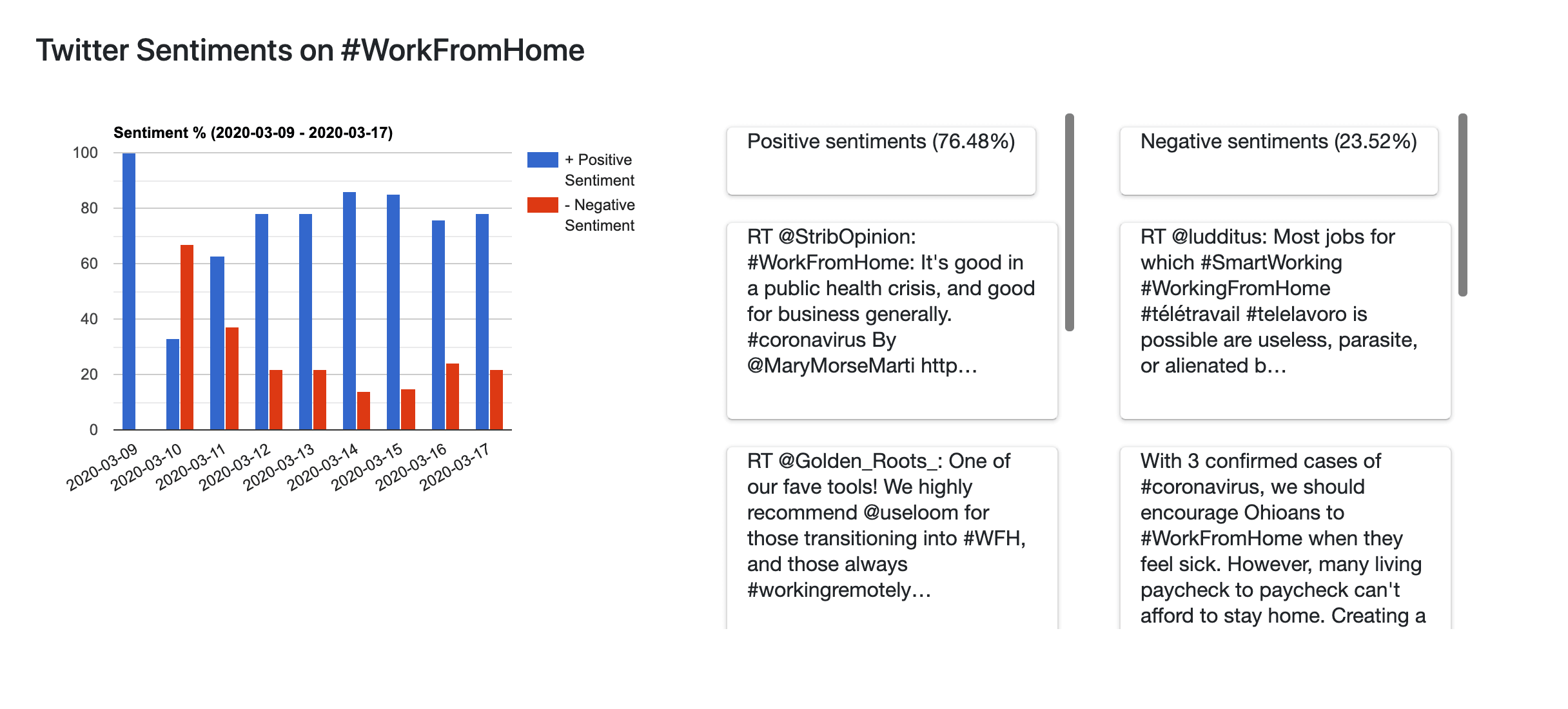
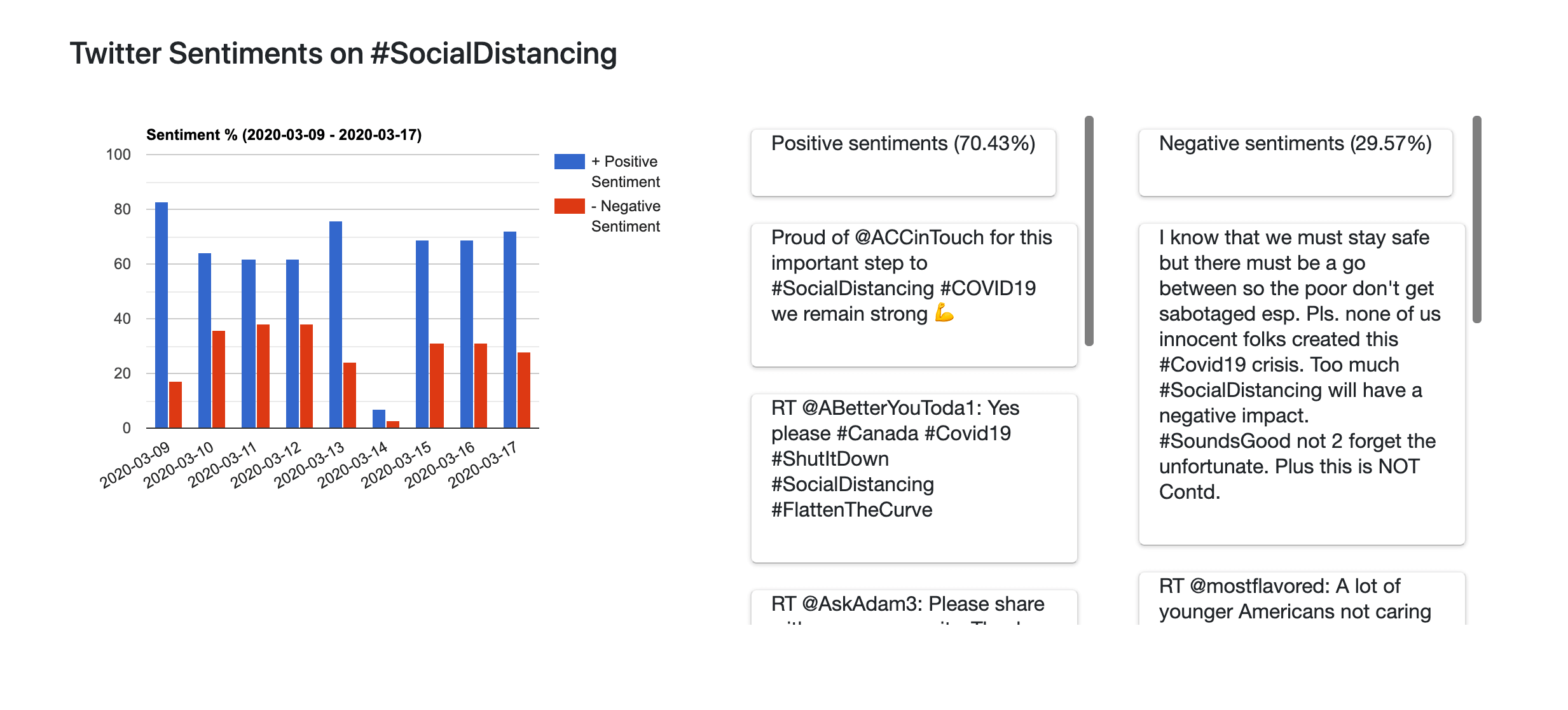
Sentiment analysis, a way of measuring the emotions behind social media, indicates that posts with the hashtags #SocialDistancing and #WorkFromHome were mostly positive in sentiment, at 70 percent and 76 percent respectively.
Are trending topics changing over time?
So far, our analysis shows that the topics being discussed are wide ranging and are sustained over time. The hashtags used do change in popularity — new hashtags like “#coronapocalypse” start trending, or emerging hashtags pop up, such as “#dontbeaspreader” or “#stayhome.” So far, we see that public sentiments in different countries also differ and trends change over time. For instance, over time, India shows increased positive sentiment.
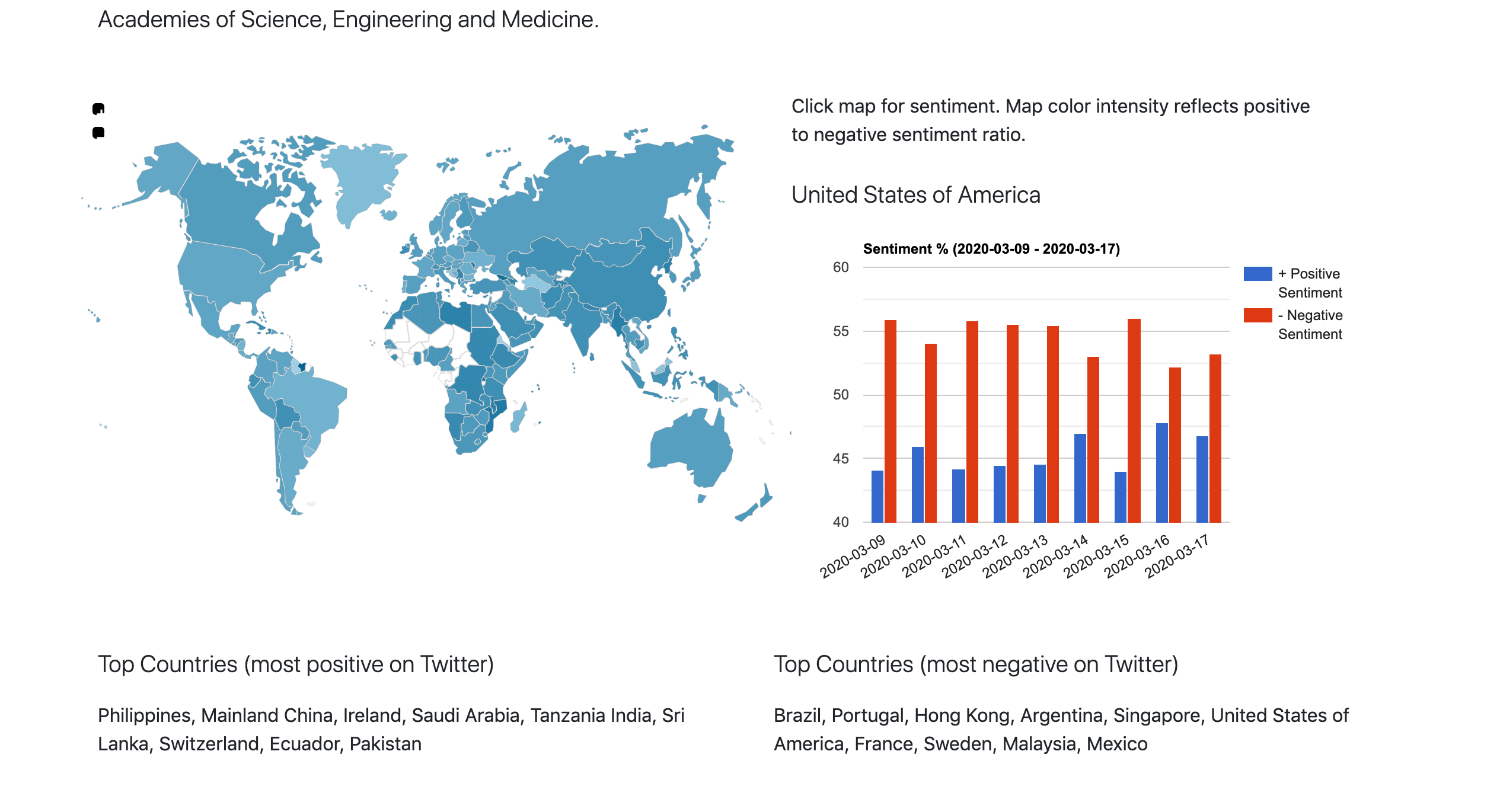
The researchers have found the countries with the most positive sentiments surrounding the coronavirus on Twitter include Philippines, Mainland China and Ireland. Countries with the most negative sentiment included the U.S., France and Sweden.
How could this analysis help people during the pandemic?
Social media plays a pivotal role in communicating information during global crisis events. We are interested in improving detection and analysis of misinformation and exposing as much false, misleading and clickbait content as possible, so that people can guard themselves against it. Moreover, in terms of research, we want to further research understanding about information spread during pandemics, and whether social media can provide insights into public perception about policy measures in real time.
Published on March 31st, 2020
Last updated on September 14th, 2020













